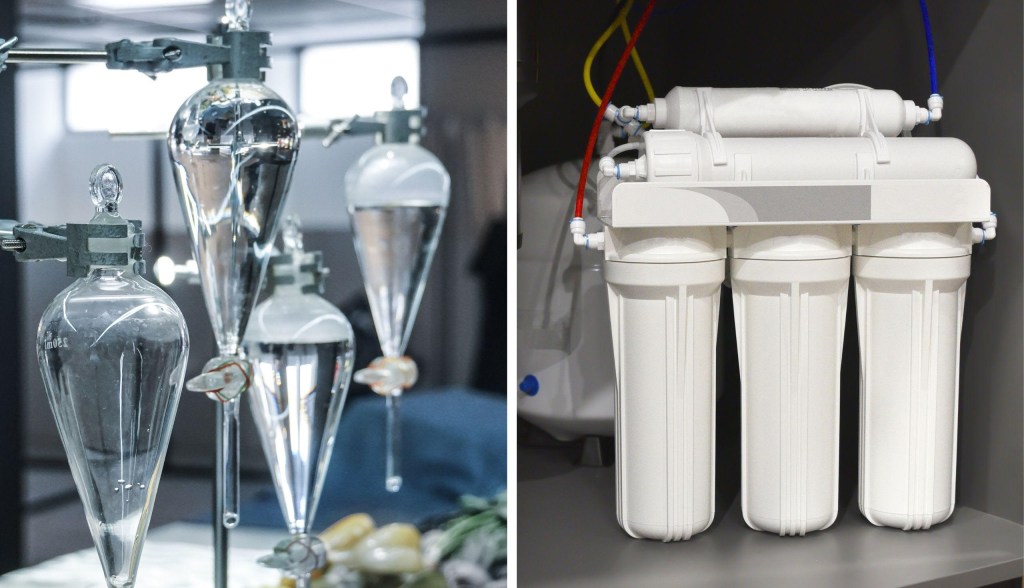
Distilled Water vs Purified Water — Which is Best for Your Workplace Water Supply?
Drinking water is essential for life, and encouraging employees to stay hydrated in the workplace is key to supporting both their long-term health and organizational productivity. But, with so many types of water available — from purified water, spring water and sparkling water to distilled water and mineral water — it can be challenging to determine which option is best to provide at work.
For teams in pursuit of a clean water supply that can promote health and performance, we’re taking a closer look at the difference between purified water and distilled water — so you can find the option that’s best suited for your workplace.
What’s the difference between purified water and distilled water?
While purified water and distilled water are both clean water options, the way they’re produced – and their outcome – is what makes them different. Here’s a quick explanation of the differences between distilled vs purified water:
What is purified water?
Purified water, typically made with groundwater or tap water, goes through a filtration process to remove various impurities and contaminants. Some of the most common impurities that are filtered out include:
- A broad spectrum of harmful chemicals
- Algae
- Bacteria
- Parasites
- Fungi
- Traces of certain metals like lead and copper
When it comes to the purification system used to clean water, there’s a wide range of techniques used today, both commercially and in homes. But first, let’s take a look at why tap water often needs a purification boost.
According to the United States Environmental Protection Agency (EPA), 90% of the population in the US gets drinking water from a public water system that treats, stores and distributes water. Because water sourced from lakes, rivers, reservoirs and other areas can contain a range of chemicals, contaminants and germs – some of which are harmful to our health – the EPA has created the Safe Drinking Water Act. This act sets the standard for municipalities to protect drinking water against more than 90 contaminants.
Public drinking water goes through standard water filtration, comprised of the following treatment methods:
- Coagulation: Positively charged chemicals are added to the water supply to neutralize the negative charge of dirt and other dissolved particles.
- Flocculation: The water source is mixed to form larger, heavier particles called flocs.
- Sedimentation: Flocs settle to the bottom, separating solids from the water.
- Filtration: The clean water that was isolated by sedimentation and left on the top is filtered again to separate additional solids from the water.
- Disinfection: One or more chemical disinfectants, such as chlorine or chlorine dioxide, can be added to the filtered water to kill any remaining contaminants or bacteria.
However, while the standards for public drinking water are set by the EPA, it’s important to note that water quality differs everywhere, which impacts the filtration process and the resulting cleanliness. This means that tap water, although monitored and filtered, is not generally as clean as it could be. In fact, the CDC estimates that at least 1.1 million people in the United States get sick every year from germs in drinking water.
That’s where additional techniques for purification come into play when providing high-quality hydration for your workplace.
What is purification and what methods are used to purify water?
Purification is the process of removing contaminants and chemicals from water. Some of the most common methods to effectively remove impurities and contaminants from drinking water include:
- Deionization: In this water purification system, two types of ions are removed to create deionized water – positively charged “cations” and negatively charged “anions.” Cations include minerals like calcium, magnesium, iron and sodium, while anions include chloride, sulfates, nitrates, carbonates and silica.
- Boiling water: Simply boiling water is a valid way to kill disease-causing germs, including viruses, bacteria and parasites, as reported by the CDC. This is generally considered an efficient water purification method when you don’t have access to safe, treated water.
- Reverse osmosis (RO): During reverse osmosis, harmful contaminants and other impurities are removed by using pressure to force water molecules through a semipermeable membrane. Once these chemicals and contaminants are filtered out, you’re left with clean, pure water.
Methods of water purification can vary, but at the end of the day, they’re aiming to produce the same results — pure water. For water to be considered “purified,” it must have lower than 10 ppm (99% of all contaminants should be removed), according to Sensorex,.
What is distilled water?
Distilled water is a type of purified water that goes through a distillation process to remove impurities and other water contaminants. Distillation essentially works by boiling water and collecting the resulting steam, which eventually returns to a liquid state once cooled.
Purdue University reports that this water purification system is highly effective at removing impurities like:
- A wide range of bacteria and viruses
- Protozoa like giardia
- Harmful chemicals such as sulfate and lead
You might be asking yourself if distilled water is safe to drink. The answer is key – and in fact, distilled water is often used in laboratories and facilities due to the resulting water purity. Because of its high quality, the CDC also recommends using distilled water in humidifiers, CPAP machines and even nasal rinses. However, it’s not as common to drink water that’s been distilled, although it’s unquestionably safe to do so due to its lack of impurities.
On the other hand, it’s important to note that this powerful purification process inevitably removes essential minerals. That means no chemicals or impurities, but no taste or good stuff either.
Minerals that occur naturally in water can include calcium, magnesium, sodium and potassium. These minerals can have valuable health benefits including improved heart health, lower blood pressure and increased bone density.
The advantages and potential drawbacks of each water supply
The pros and cons of purified water
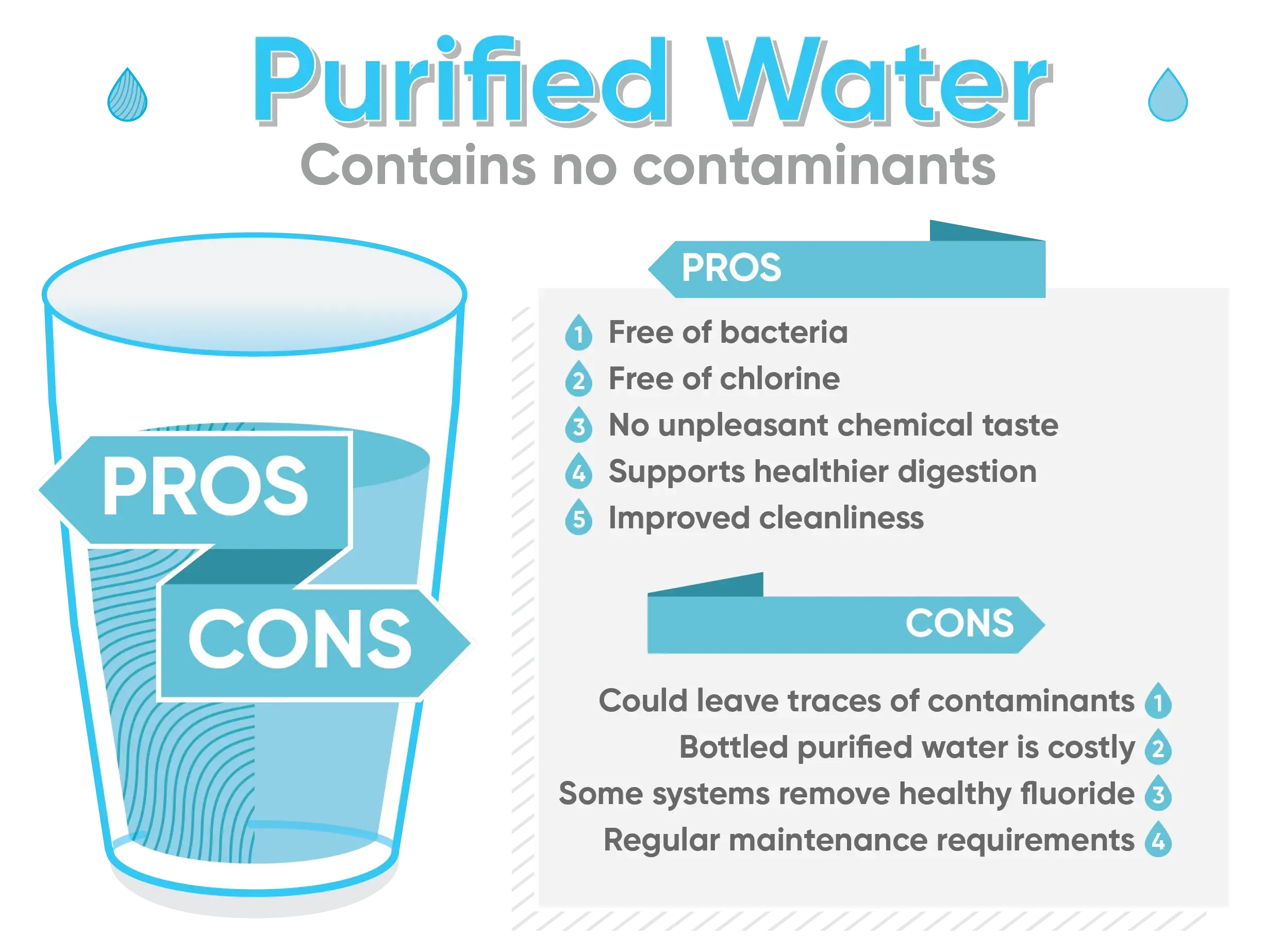
The EPA sets legal limits for over 90 harmful contaminants in tap water to ensure it’s considered safe for consumers to drink. However, an effective purification system can take this filtration process to the next level for an even cleaner result. Various purification methods ultimately promote several valuable benefits:
- Purification successfully removes bacteria that can lead to adverse health effects (e.g., nausea and stomach aches).
- Systems for purification like charcoal filters remove chlorine, a common chemical added to the public water supply as a disinfectant and linked to a higher risk of certain cancers.
- Filtration removes unpleasant tastes associated with organic matter, chemical treatments or metal plumbing.
- Drinking purified water supports a healthier colon and digestive tract.
- Most purification systems improve the cleanliness of tap water, especially in areas with lower water quality.
Although purified water has clear advantages, it’s equally essential to consider what you need to be cautious of when drinking this type of water:
- Some purification processes aren’t as effective at removing contaminants as distillation. As a result, it’s possible for impurities to be left behind, including chemicals and pesticides.
- Opting for bottled water to gain access to pure water is costly and unsustainable.
- Certain purification systems remove the fluoride in tap water, which is known to reduce tooth decay and support overall dental health. In fact, the CDC called the addition of fluoride to drinking water one of the 10 great public health interventions of the 20th century.
- Some filtration and purification systems require maintenance and upkeep to ensure the water filter maintains effectiveness over time.
The pros and cons of distilled water
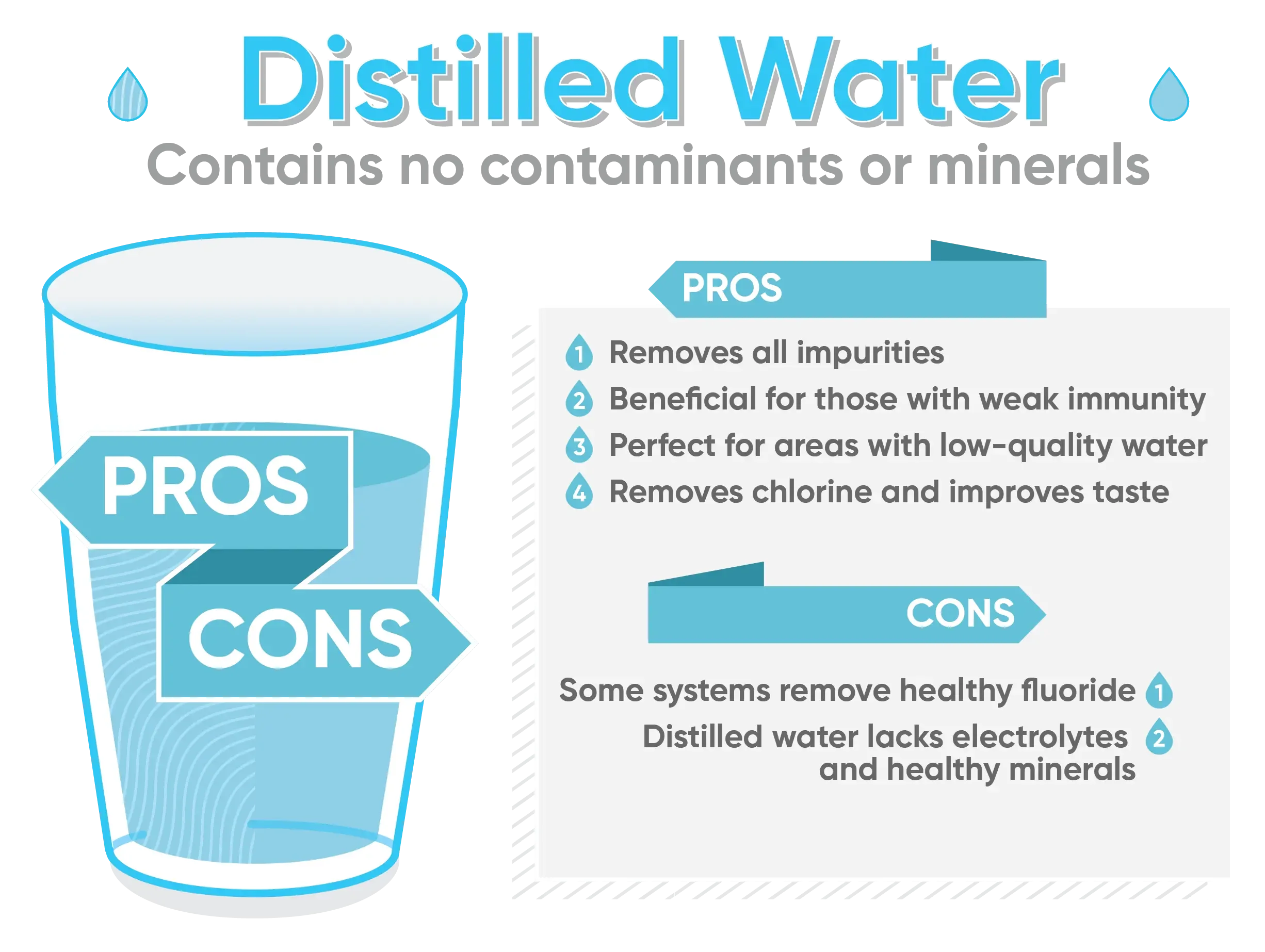
Despite the fact that distilled water and purified water are closely related, both aiming to produce clean water results, water that’s been distilled has unique advantages and disadvantages to take into account. Consider the following benefits:
- Distillation is a particularly impressive technique to remove contaminants from water.
- Because of a lack of impurities like bacteria and pesticides, distilled water is beneficial for individuals with weakened immune systems (e.g., people with HIV/AIDs or cancers).
- Drinking water that’s been distilled can support the health of individuals who live in areas with low-quality water and filtration standards.
- Distilling water effectively removes chlorine from the water, which boosts its taste.
However, this impressively clean water isn’t without its downsides:
- Similar to most purified water, the distillation process also removes fluoride, which means individuals who drink distilled water will need to pay extra attention to their dental health.
- While being free from contaminants, this type of water also lacks electrolytes and natural, healthy minerals — like magnesium and calcium — which are important for your health. Calcium can be especially critical for children. According to the American Society for Nutrition, relying on drinking water with very low mineral content can compromise bone development in children because it decreases the level of calcium intake.
Distilled vs purified water – Which option is best?
Taking all the facts into account, what’s the best option for your workplace? The truth is, there’s no one right answer. As long as you’re drinking and serving water that’s being filtered and treated properly, then the type of water you choose is entirely dependent on preference.
Both distilled water and purified water are cleaner than tap water and support your overall health. The main difference between these water types is that distilled water will always remove the minerals and electrolytes. And while reverse osmosis filtration will also remove any minerals present, other purification processes like boiling and deionization will not.
Fortunately, you can consider a water filtration system that gives your workplace the best of both worlds. We’ll take a closer look at how Quench is helping organizations do this below.
Provide purified water with a bottleless water cooler at work
When businesses and workplaces are in search of water that’s just as clean as distilled water but has the essential minerals needed to support the long-term health of their workforces, Quench can help. Culligan Quench offers water-as-a-service solutions by providing filtered water through a broad array of bottleless machines to help organizations keep their employees, customers and guests happy, healthy and hydrated.
Some of our most popular bottleless dispensers provide quenchWATER+, our Quench-branded mineral-infused and electrolyte-enhanced alkaline water. This cutting-edge technology takes on-demand water to the next level through a 5-filter setup:
- Sediment filter
- Pre-carbon filter
- RO filtration
- Mineral + filter
- Polishing filter
This process is designed to remove sediment, contaminants and bad tastes while adding minerals and electrolytes back in — ensuring the cleanest result that includes the healthy minerals your employees need. Plus, this cooler connects directly to your building’s existing water line so you can provide access to an endless supply of fresh, filtered water as needed.
With a bottleless water cooler from Culligan Quench, you can serve clean, great-tasting water that supports the health of your valuable team members, regardless of your area’s local water quality. Try our product finder to discover the machine your business needs or get a free quote to get started.
Questions & answers
Is distilled water safe to drink?
Yes. Distilled water is purified through a rigorous process of boiling water and then capturing the steam, allowing it to cool into liquid form. This process is a highly effective method of removing contaminants and results in water that’s free from unwanted chemicals and minerals. That’s why it’s often recommended for people with compromised immune systems or certain underlying medical conditions.
Which water is best for my coffee maker?
Purified or filtered water is typically best for coffee makers. Because distilled water doesn’t contain magnesium or calcium, it can produce coffee with a bitter taste. These minerals are necessary for a more balanced coffee flavor.
What is purified water used for?
Purified water can be used across a variety of applications, especially for drinking water. You can feel confident providing this kind of filtered, clean water to customers and employees – it not only tastes great but also promotes hydration. Many businesses choose to enhance their filtered water with bottleless dispensers that include quenchWATER+, our Culligan Quench-branded mineral-infused and electrolyte-enhanced alkaline water. It helps replace healthy minerals that are removed during the filtration process.
What is distilled water used for?
Distilled water is used when the water’s purity is more important than mineral intake or taste. For instance, it can be used for laboratory research or as drinking water for individuals with weakened immune systems.
What does distilled water taste like?
Because it’s been stripped of minerals, distilled water typically tastes flat and flavorless.
Recommended products
Culligan Quench has an advanced suite of point-of-use systems that are designed to meet the needs of workplaces of all shapes and sizes. Here are some products we recommend for your business.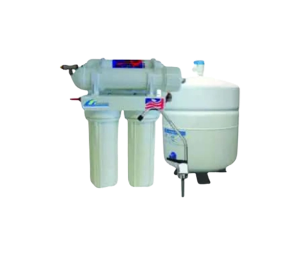
Under-Sink Reverse Osmosis Filtration System
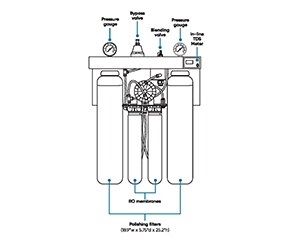
TFS450 Blended Reverse Osmosis Water Filtration System
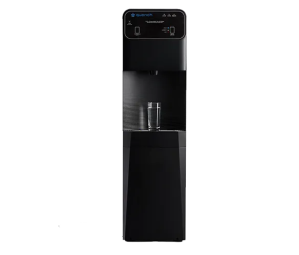
Q12 Touchless Bottleless Water Cooler
Available with quenchWATER+ electrolyte water